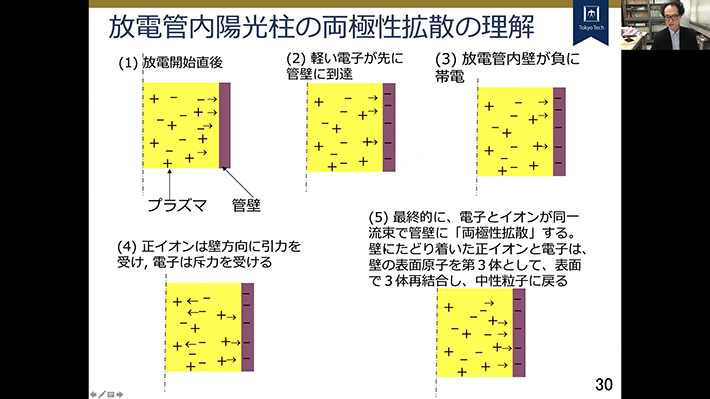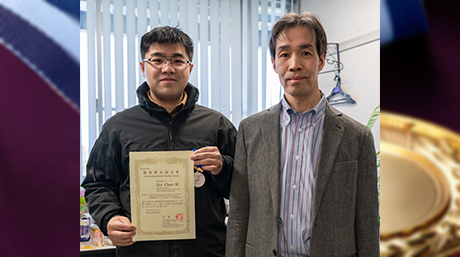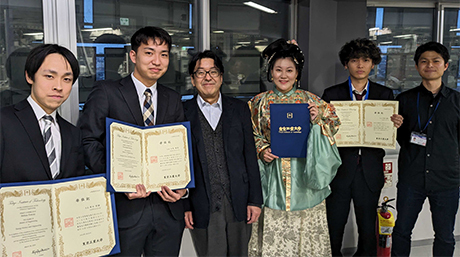Electrical and Electronic Engineering News
High Voltage Engineering -Course introduction #16-
Hello, we are the EE HP Supporters!
In our course introduction series, we introduces courses characteristic of Electrical & Electronics engineering in an easy-to-understand manner.
This time, we are introducing the course "High Voltage Engineering".

Zoom lecture as a result of covid-19
First of all, what exactly do we mean by “High Voltage”?
According to the 3rd article of the technical standards for electrical equipment, “High Voltage” is legally defined as being over 600V.
However, from a technical perspective, this “600V” definition is not all-encompassing. This is because even at voltages below 600V, depending on the material to which voltage is applied, the phenomenon of “electrical breakdown”whereby the material loses its insulating properties and a large current flows has full possibility of occurring.
For this reason, during this course, we interpret “High Voltage” to be any voltage at which electrical breakdown, and thus discharge, may occur.
During the first half of the course, we learn about the physics behind the phenomenon that is electric discharge. The form of electric discharge that we may be most familiar with is simply, lightning. When small pieces of ice collide with each other within a thundercloud, charge separation occurs making the top part of the cloud positively charged and the bottom part of the cloud negatively charged. As a result, a strong electric field is created between the cloud and Earth, and when electrical breakdown occurs between the thundercloud and Earth, lightning discharge occurs.
By the way, there is a common line of thought that we should distance ourselves from trees as much as possible in the event of a lightning storm, but the truth is that the safest place to be in is within a 45° cone zone of the tree with the top of the tree as the apex. This 45° cone is the protection area of the tree. However, something to note are that it is better to crouch to ensure that our whole body is within the protection area. Another thing to note is that if we are too close to the tree, we may be struck by secondary discharge from the tree which will inevitably be struck by lightning and carry charge.
The latter half of the course if primarily groupwork to solve questions based on real-life problems. By puzzling over questions such as “How many times does lightning need to strike an outdoor onsen bath in order to raise the temperature of the bath by 30 degrees?”, we are able to not just deepen our understanding of high-voltage engineering, but also able to draw connections between the theory we learn and the physical phenomena around us. In this way we also train the skill most required of an engineer: the ability to solve real problems with inevitably limited knowledge.
Depending on industry, we may need to handle voltage so high that it is difficult to imagine. For example, voltage is stepped up to over 110kV in electrical transmission to reduce power loss. Meanwhile, there are electron microscopes in development that produce electron beams using 1MV of voltage.
An engineer who handles such high voltage requires special knowledge and expertise. Through the course of high-voltage engineering, we are able to take a step towards the world of high voltage.
~ A word with Prof. Akatsuka ~
- 「What I would like students to learn through “High Voltage Engineering”」
- In order to understand high voltage phenomenon, we need knowledge of not just electric circuits, but also of atomic physics such as atomic excitation and ionization, and also of condensed matter physics such as band theory. Through the course of “High Voltage Engineering”, I would like you to gain the ability to combine your knowledge of various fields such as physics and chemistry to fully understand high voltage phenomena.
- 「Something I would like students to know」
- High voltage engineering is often thought to be “safety engineering” or “applied engineering” in electric power industries or heavy industries. Of course, that is important, but knowledge of electric discharge and plasma formation is necessary as well. High voltage phenomena are applied in so many fields of electrical & electronic engineering, such as the plasma discharge used for memory fabrication in semiconductor engineering, or discharge and electron beams used to produce electromagnetic waves. I hope that all of you who aspire to study EE will take interest in high voltage engineering.




